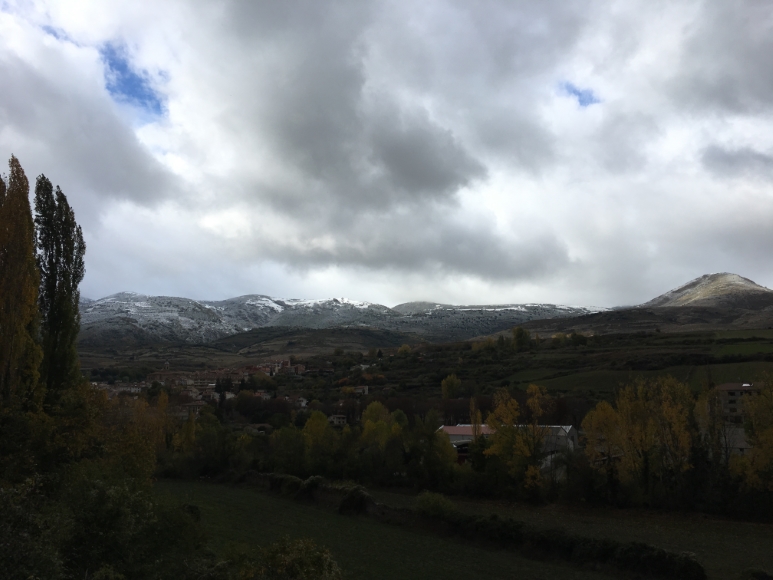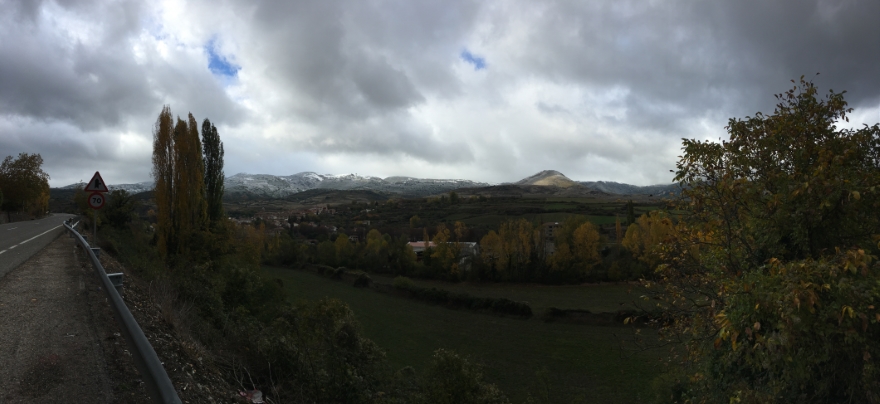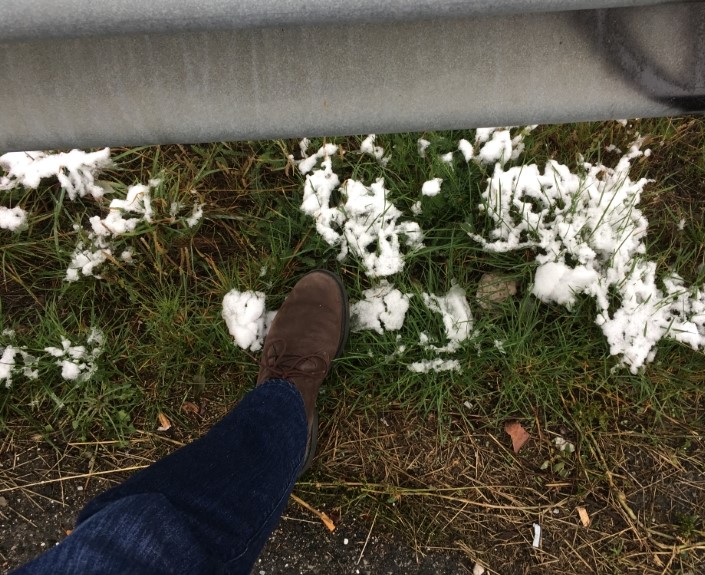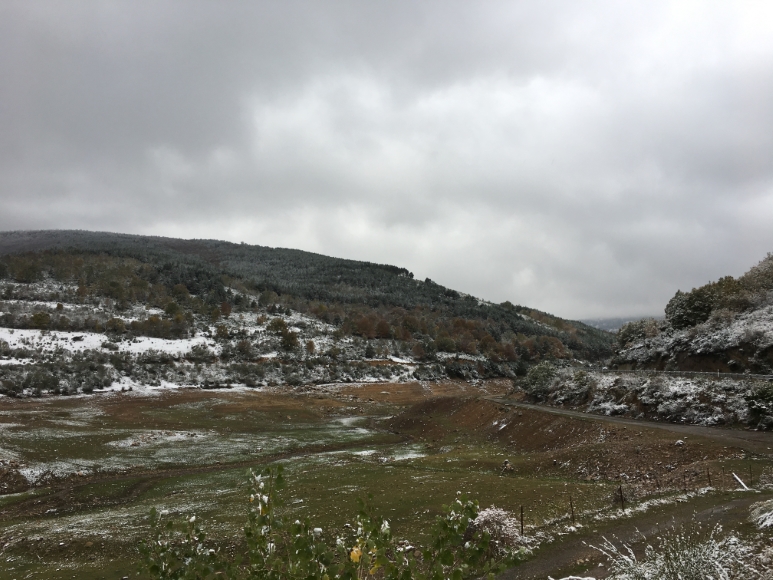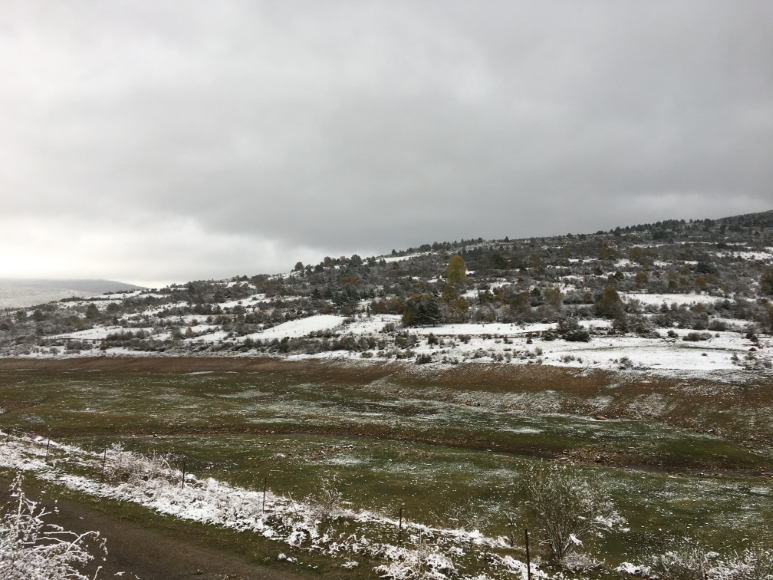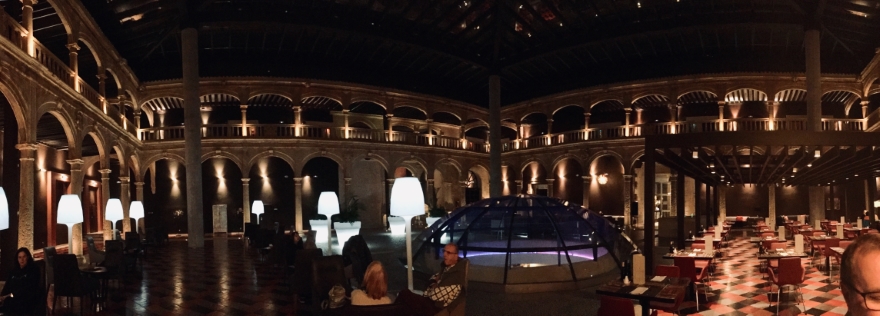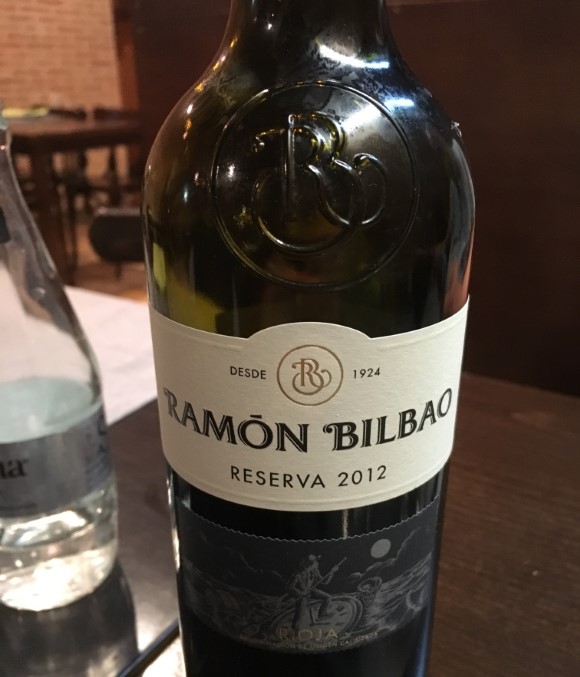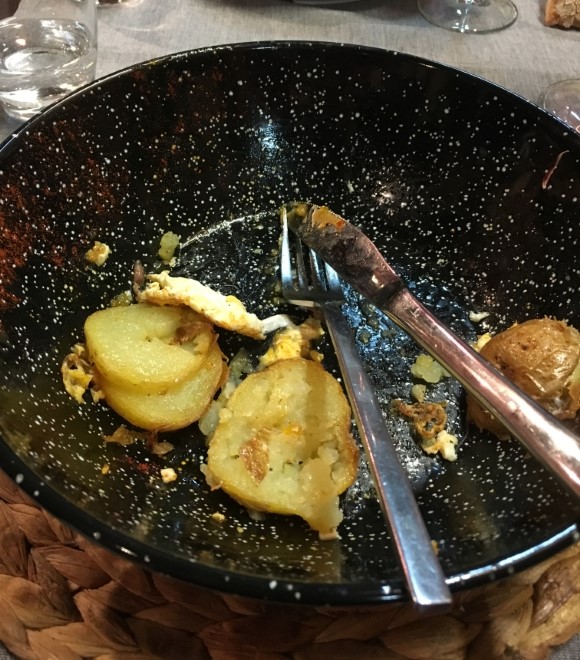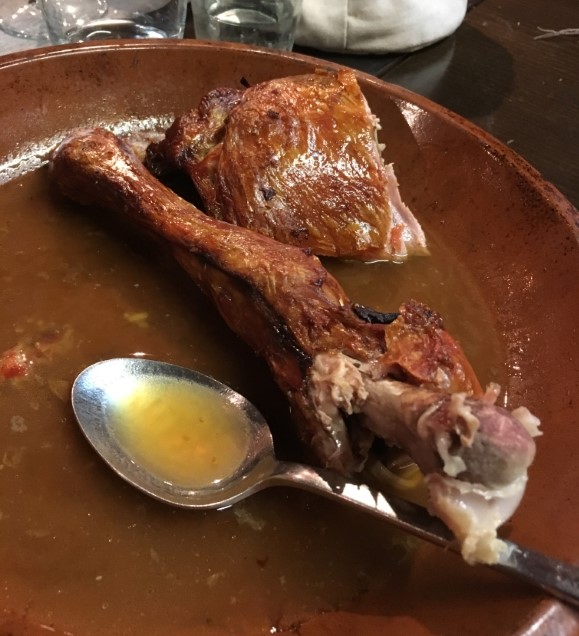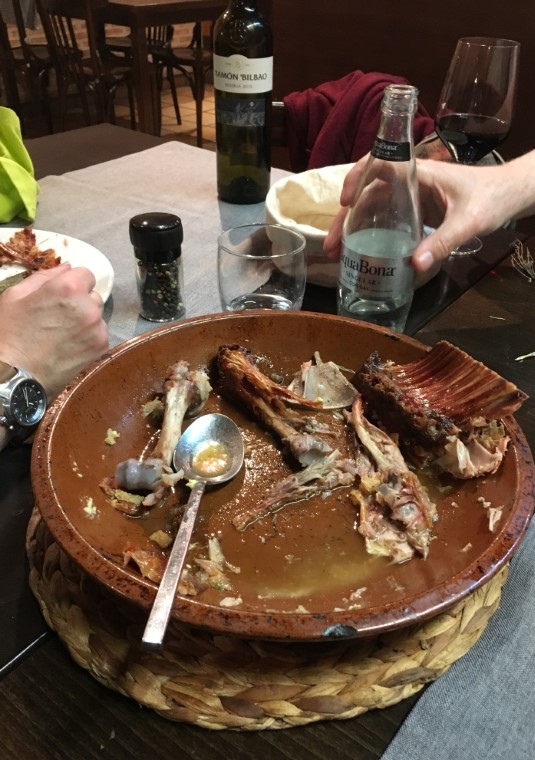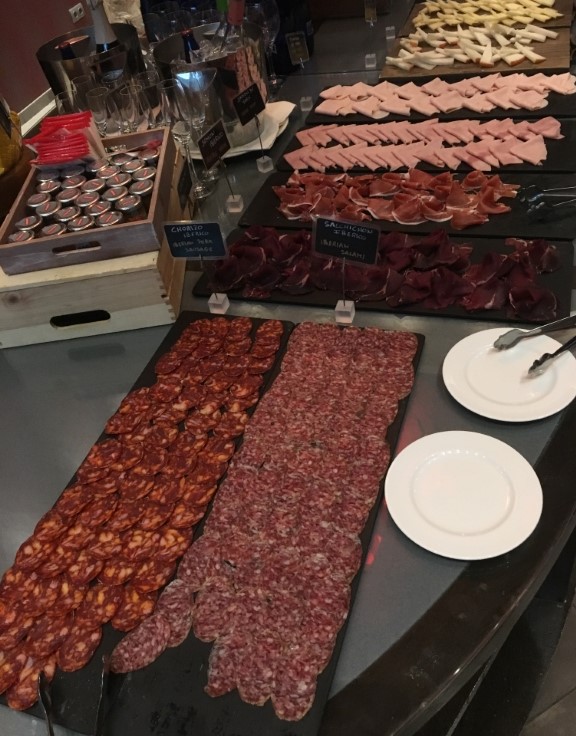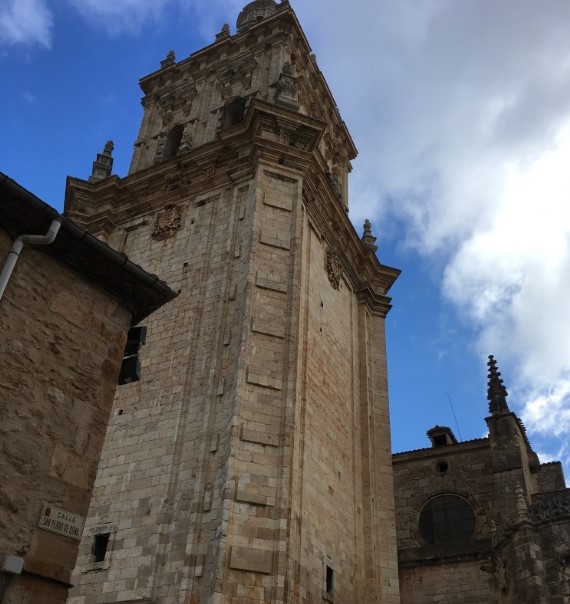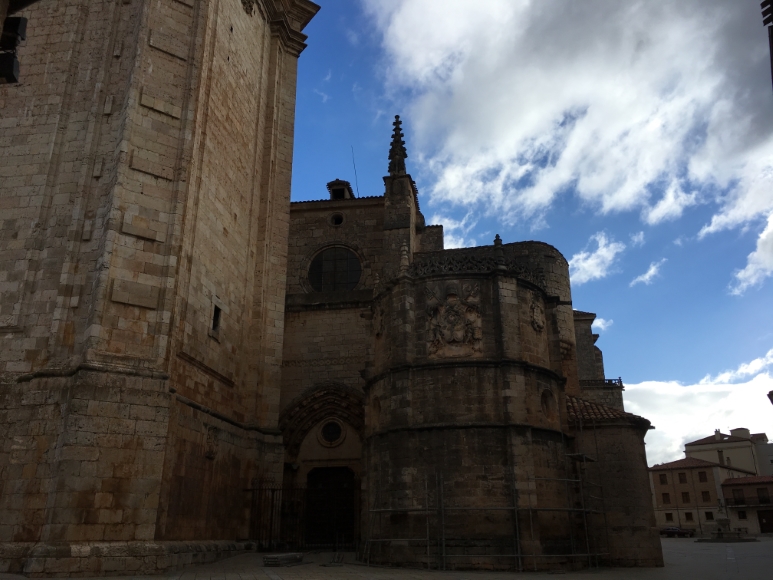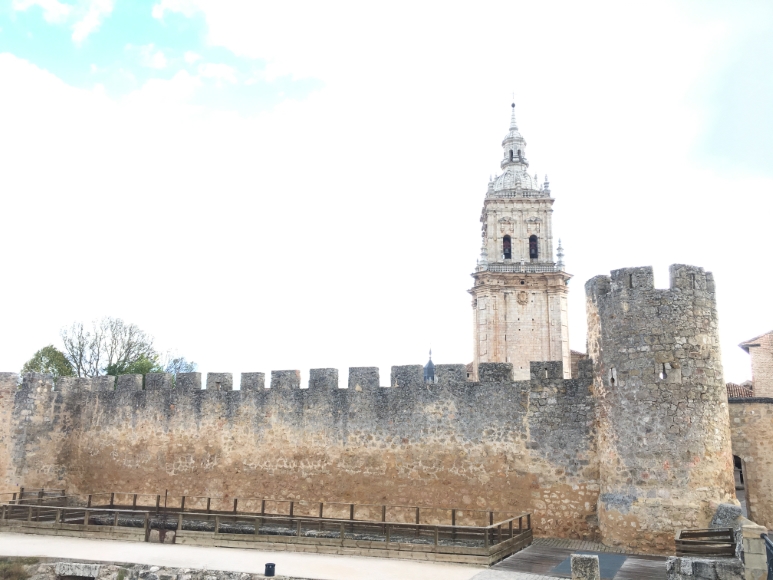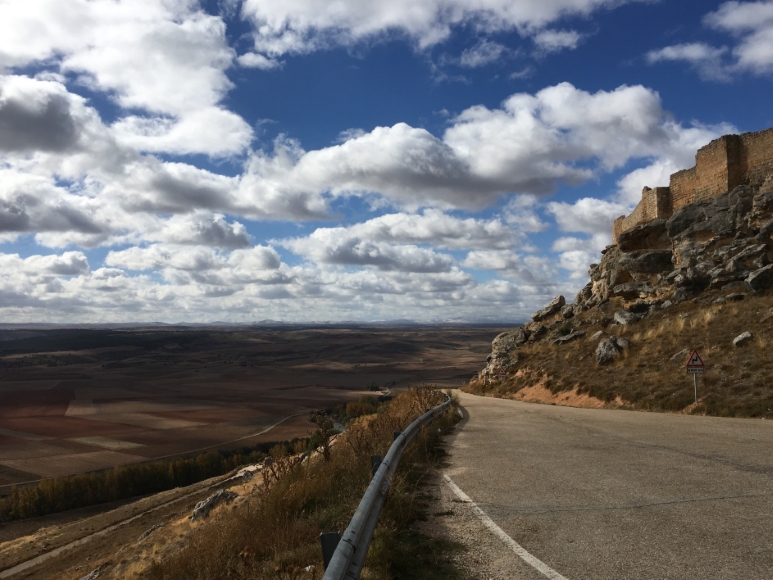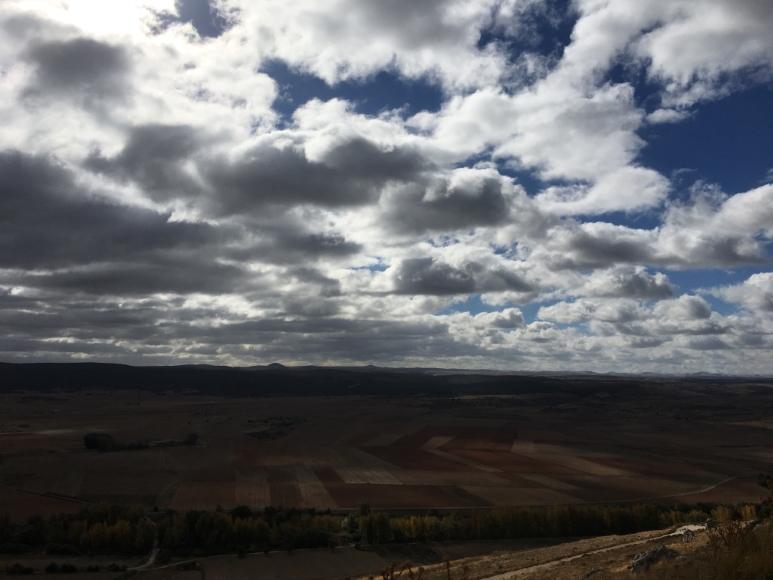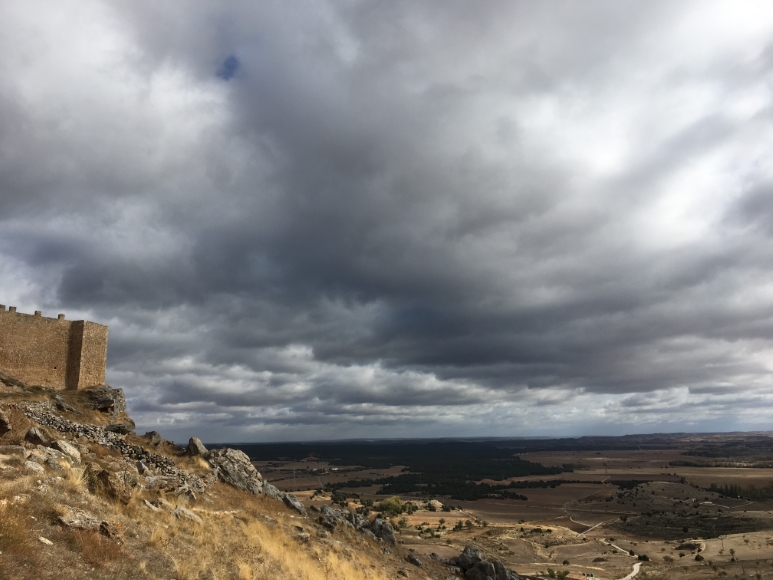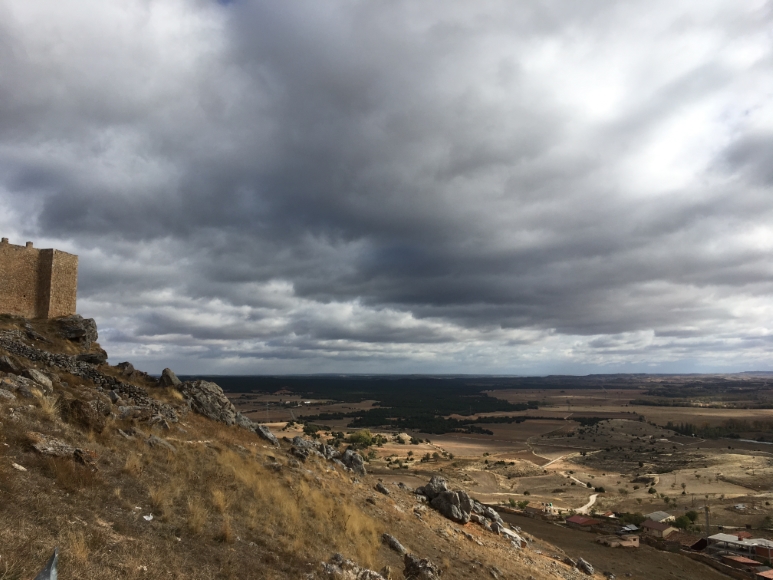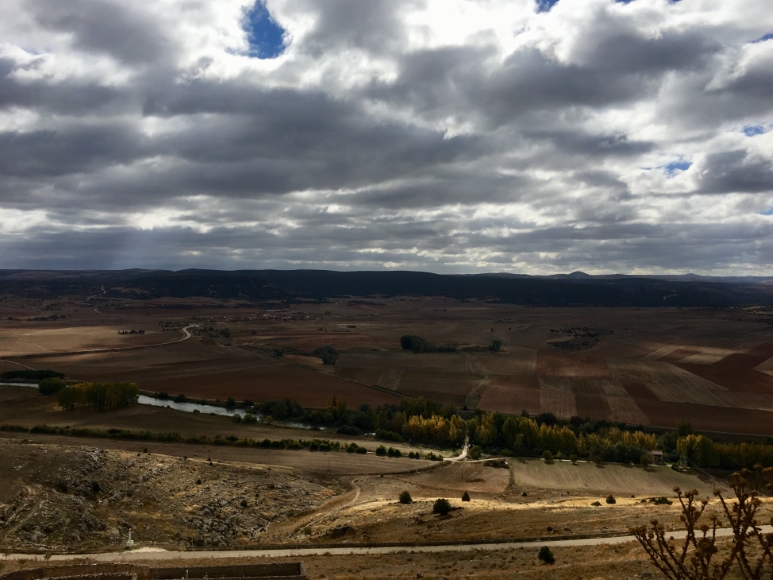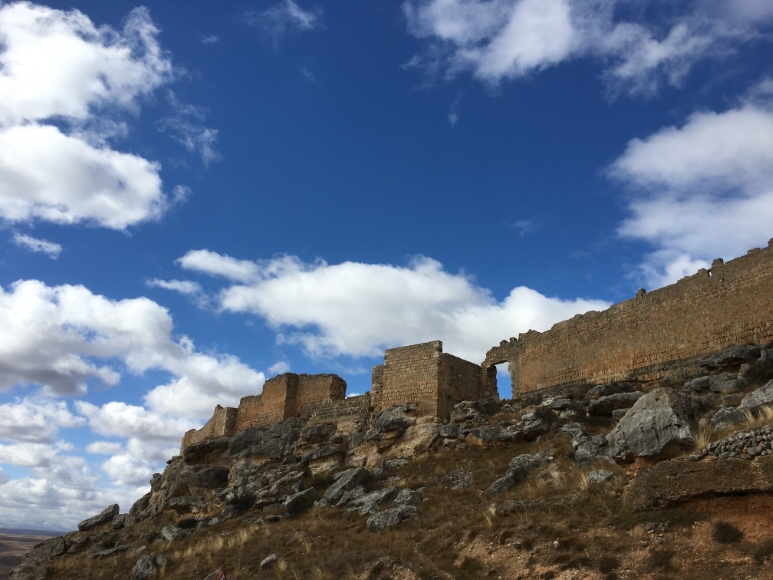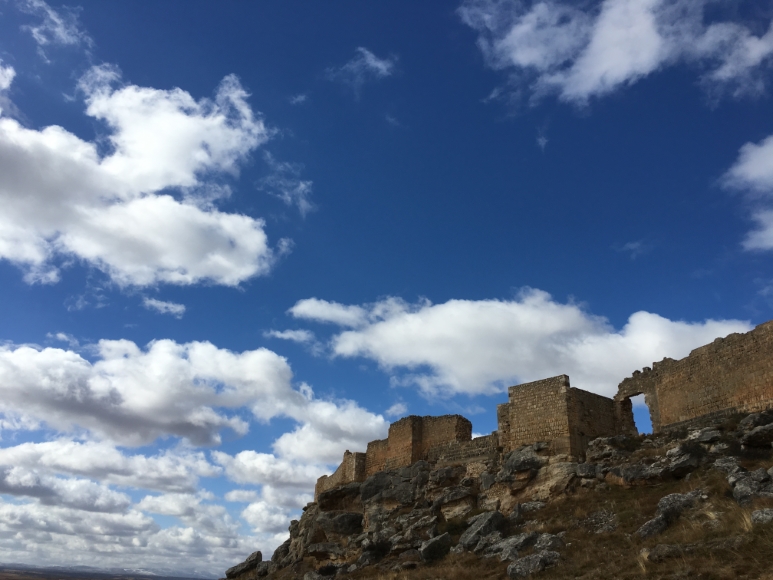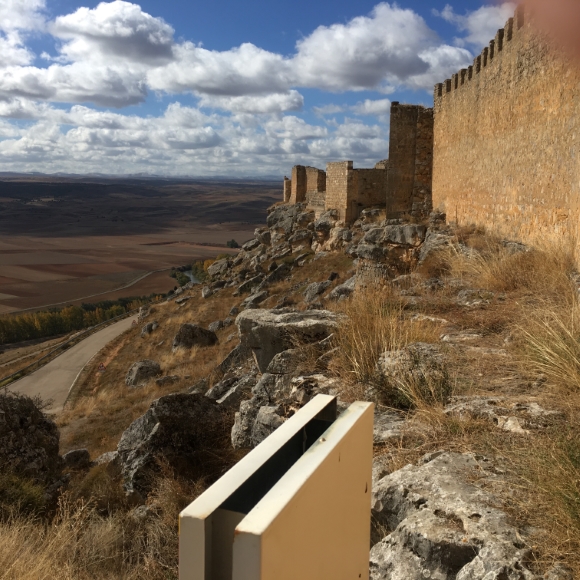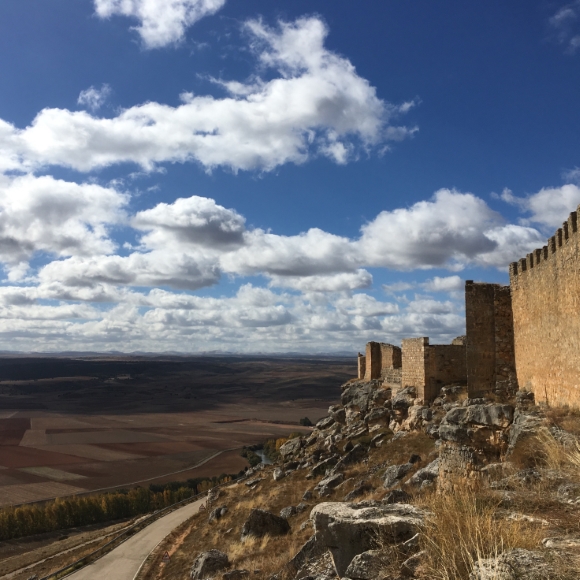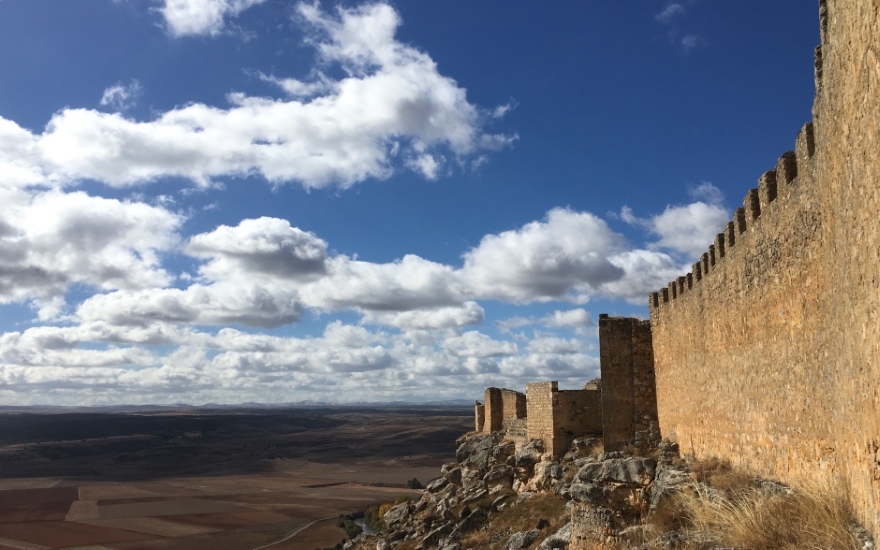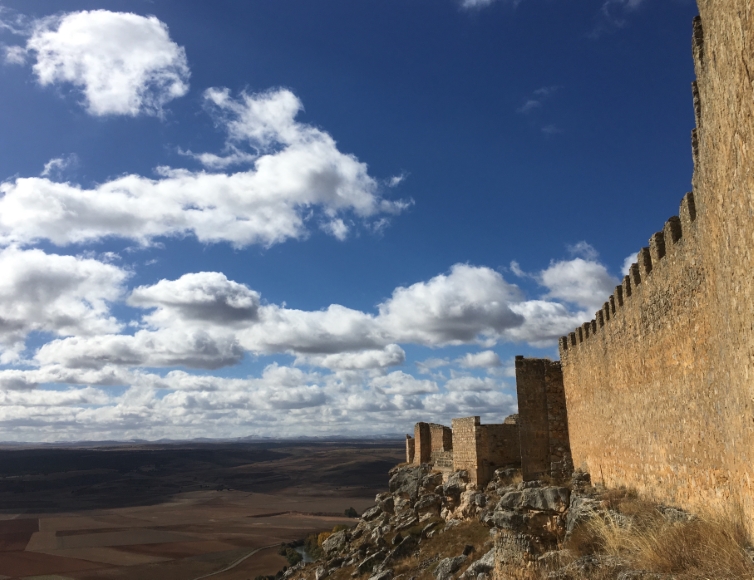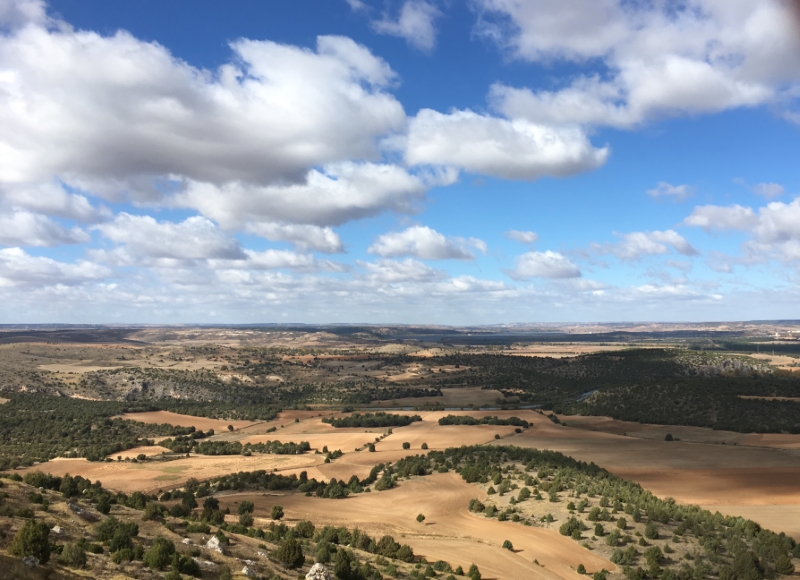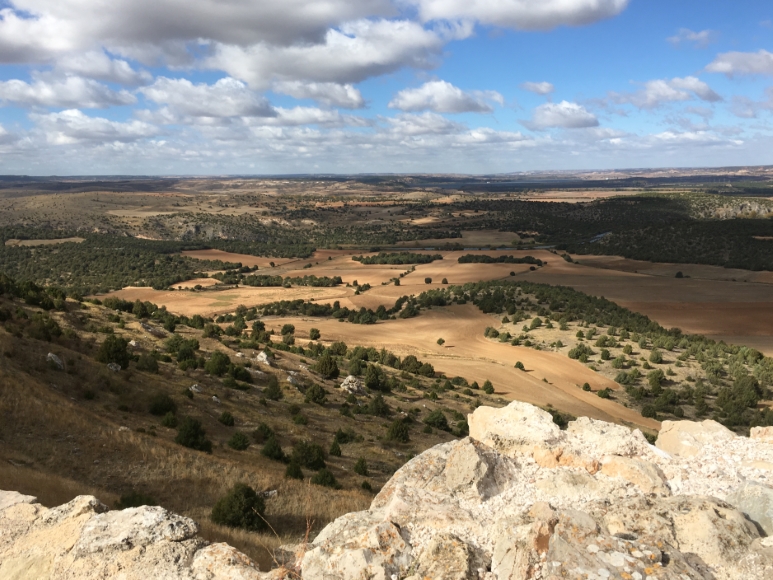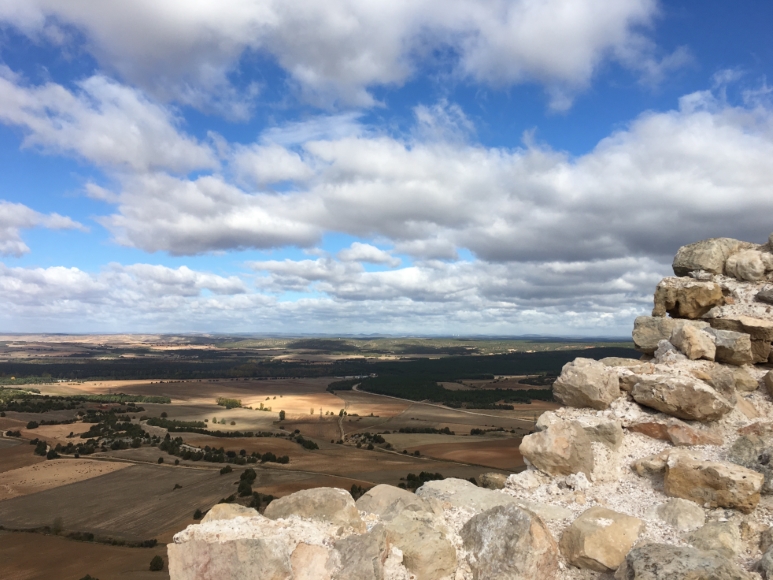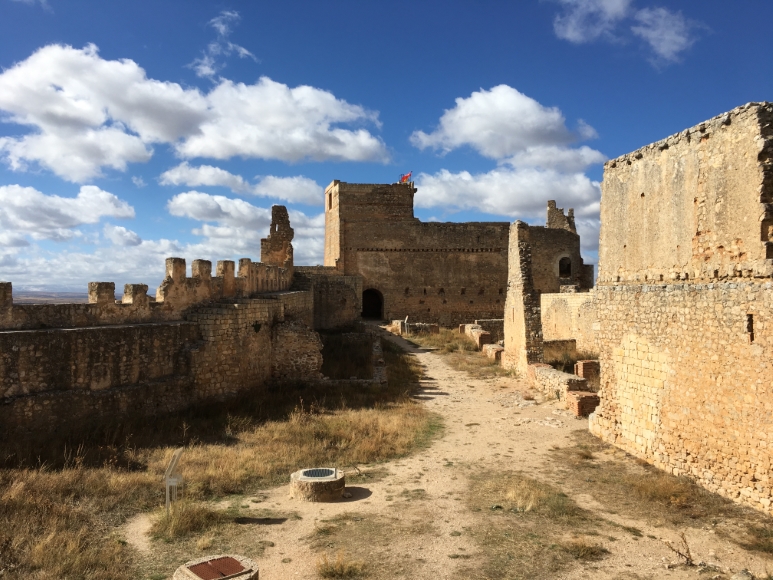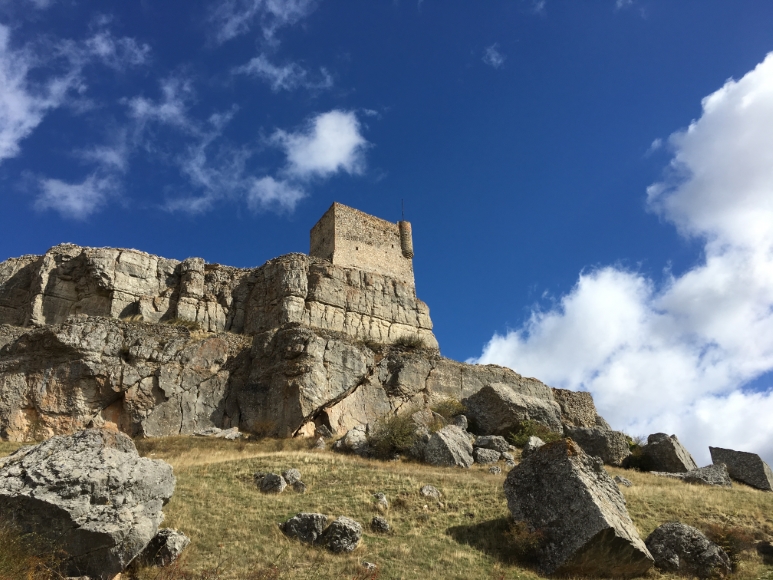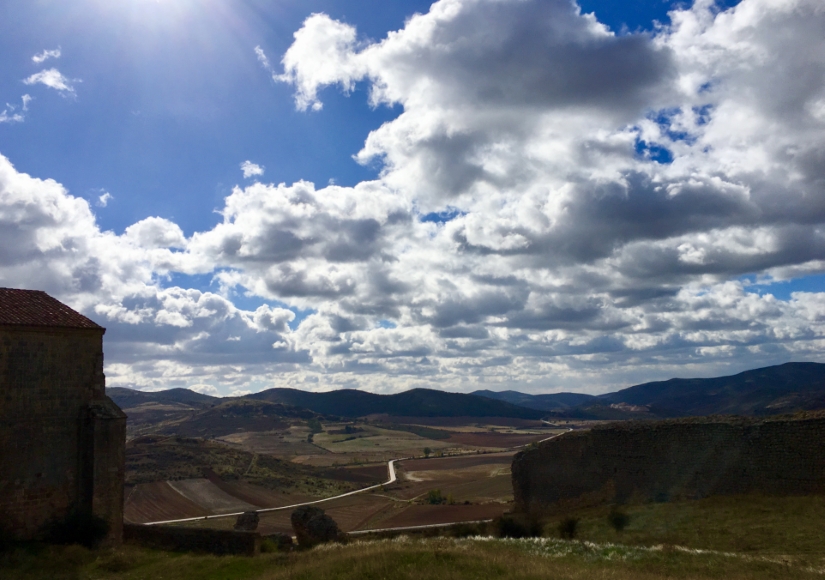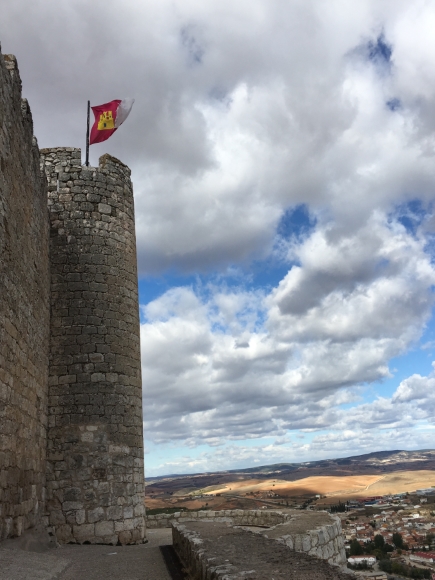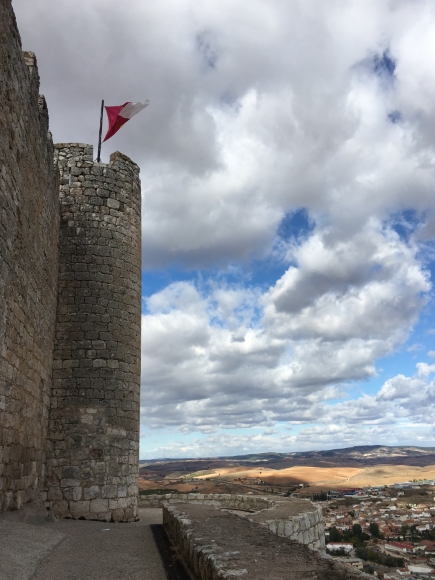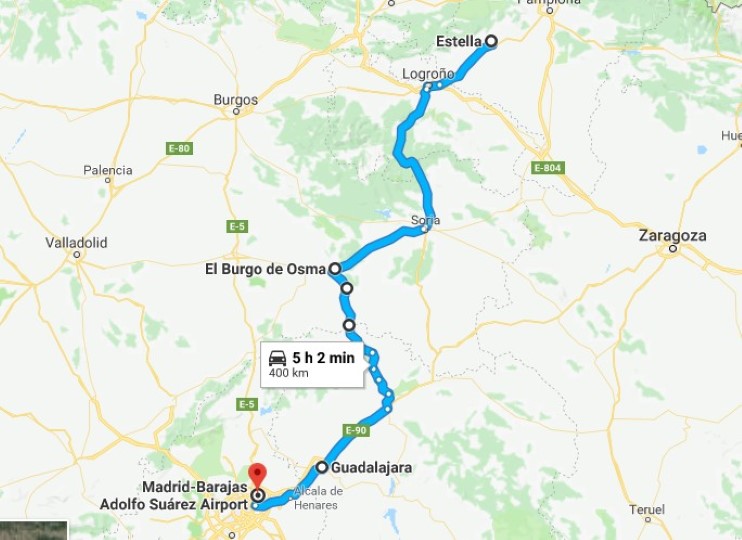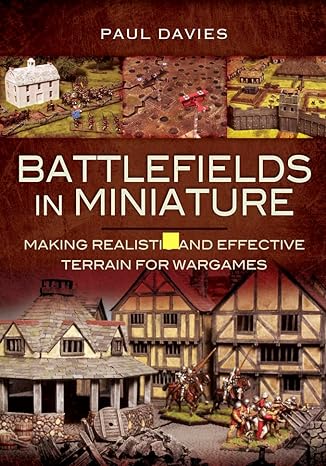The Route To Madrid - after Estella 2018
El Cid's Highway
Game 1 Umayyad Arab vs Armenian
Game 2 Umayyad Arab vs Delhi Sultanate
Game 3 Umayyad Arab vs Alexander The Great
Game 4 Umayyad Arab vs Maurikian Byzantine
Game 5 Umayyad Arab vs Medieval Polish
The Castles! Driving to Madrid
At the end of the competition - a very civilized early afternoon facilitated by the 2 split games - the intrepid and trophy-free team from Central London headed south by car, up and over the mountains and onto the Spanish central massif.
Taking the decision to avoid the obvious highways (or possibly not knowing the Spanish road classification system the sunny day we had left in Estella soon turned decidedly chilly as we climbed into the mountains, soon breaking out of a twisting forest road onto a positively GoT-esque vista of snowcapped hills and dark brooding clouds.
This was staggering countryside utterly unlike anything we had expected to see - rich forests and snow-laden clouds bearing down on villages nestled in the hillsides.
El Cid
The geology was as imposing as the weather with sheer cliffs and mountains displaying layers of history for all to see
Soon we had ciimbed even further - approaching 2,000m2 above sea leve according to the road signs there was actual real live snow on the ground. This was photo-worthy in tself.
To complete the full alpine landscape feel, as we surveyed the panorama the sound of cow bells could be heard across the valley.
Spanish Castles
Having stayed a one of the cheapest possible hostelries in Estella, the journey to Madrid was broken for the night in slightly more salubrious premises, a spar hotel in Burgo de Osma, almost literally a dot on the map that was now our overnight stay
Burgo de Osma-Ciudad de Osma is the third-largest municipality in the province of Soria, in the autonomous community of Castile and León, Spain. It has a population of about 5,250. We stayed in the larger conurbation of El Burgo de Osma (the borough of Osma, sometimes just called El Burgo) to the east of the river Ucero, the cathedral town of the province. Osma derives from the Celto-Roman (Celtiberian) Uxama, while Burgo is cognate to the English word borough
The hotel itself had originally been a courtyarded palace, with a glass roof added to enclose the central space an turn it into a rather grand bar and restaurant, The galleries on the first level opened onto the guest rooms and the dome in the middle of the floor looked down to the themal baths below!
The town was also - of course - somewhat of a gastronomic hotspot, and after an afternoon of tapas and beer watching Barcelona run ouit convincing winners in El Classico, team CLWC found El Asador restaurant to continue the main theme of the weekend.
Eggs and potatoes made a starter which would have worked as a main meal in most places, but loading up with carbs here was a prelude to the main event.
Roast leg of pork, on its own. Perfect.
Mmmmm. Cracking Crackling!
The steak was nothing to sniff at either
After a very long and tough battle, victory was finally declared !
In case any of us had not had enough meat the night before, the hotel breakfast buffet presented a few additional options to stock up on pig-based produce
And for lovers of Spanish cheese, just a smidge of quince jelly as well
Needless to say, none of us went for this coffee option
With some history in the town to discover, a chilly walk around after breakfast unearthed an almost inevitable Catholic church/cathedral
The Cathedral of Burgo de Osma is in the Gothic architectural style, and was constrcuted on an area previously occupied by a Romanesque church. It is one of the best preserved medieval buildings in the country and considered one of the best examples of thirteenth-century gothic architecture in Spain. The building of the church started in 1232, and was completed in 1784. The cloister is from 1512. The tower is from 1739. The cathedral is dedicated to the Assumption of Mary. Of Course.
Gothic stylings were everywhere in sight
It turned out that the town had it's own castle walls as well, allowing us to tick one castle off before our breakfast had digested...
Burgo de Osma's history sort of starts off as being a Celtiberian, and subsequently Roman, city located on El Castro hill, overlooking the present town. As one of the cities of the Arevaci, it actively participated in the Celtiberian Wars (153–133 BC) and was conquered by Rome in 99 BC. Later, it supported the cause of the Roman rebel Quintus Sertorius against Rome and was destroyed by Pompey the Great in 72 BC, although it was rebuilt shortly afterwards. According to both Pliny and Ptolemy it was one of the communities of the Conventus Iuridicus Cluniensis province in Hispania Tarraconensis and became a Municipium under Tiberius, after which began an important monumentalisation process that involved the construction of a small forum, a series of large urban villas, city walls, and an industrial district on the banks of the river Ucero.In time of the Visigoths in the 6th century, the bishops attended the Councils of Toledo
Heading south the sun at last came out, and with a continuation of the plan of taking secondary roads we stumbled across the fortress of Gomez, standing atop a staggering mesa rising out of the Spanish plain. With no entry fee, no gift shop, and only a car park for 3-4 cars this imposing fortress (with 2.5k of walls) was still one of the most staggering castles you could hope to find.
The castle of Gormaz (Spanish: Fortaleza de Gormaz or Castillo de Gormaz) is a large citadel located in Castile and León, Spain. It was the largest fortress in Europe after its expansion in 956.
The plain in this part of Spain had clearly not seen much rain in the recent past
The castle had changed hands between the Moors and the Spanish several times, and its ability to dominate the landscape is obvious frem these views
The castle is more than 390 metres long though only 10-40 metres wide, has 28 towers (originally at least 31), a main gate with a monumental horseshoe arch with remains of painted red and white voussoirs, two posterns, one of which with a small horseshoe arch, three mihrabs corresponding to a "musalla" or open air collective oratory, use of "spoliae" of the Roman period, and the remains of a water pool near the monumental gate mentioned before. It was repaired in the 14th century, from which time date the remains of two gates on the southern side.
Gormaz Castle by Drone
The original castle was built shortly after 756 AD by emir Abd ar-Rahman I of Córdoba, as part of a state ("dawla") policy to control rich landowners and peasants, as well as to try to govern and protect the Central Marches in the Douro Valley against the Christians to the North. In 965, Caliph al-Hakem II rebuilt and expanded the castle, as attested by an inscription over one of the gates
Much of the curtain wall was still intact - the village below simply wasn't big enough to steal the masonry to make more houses.
El Cid
Spain had borrowed the clouds from The Simpsons for the day
This sign was pretty much the only concession to tourism in the whole place
Gormaz not only controls a contemporary bridge on the Duero, but it is in an area rich, in all directions, in watch-towers also of the middle of the 8th century AD and with some land-owners' towers such as the one that now serves as the belfry of the church of Bordecorex. The area is rich in relics from this period, near to Sepúlveda and Segovia to the West, Ágreda to the East, Berlanga de Duero to the Southeast. This is probably one of the oldest standing ensembles of military architecture in Western Europe.
It was only too easy to imagine how tough it would have been to get here - especially before the road was built
From some angles it looked as good as new
The views over the surrounding countryside were stunning
In places the walls had been reduced, opening up the views to the surrounding region.
Inside it was not quite so intact, but still many of the original structures and the original keep were still in good nick
Gormaz Castle
Inside the Keep a well and the crennelated battlements were all still there.
Heading further south on the Route of El Cid we stumbled across yet more impressive fortresses, all easy to spot as they had been placed on top of the most challenging mountains that the Spanish could find.
Atienza Castle
This fortress at Atienza was practically Visigothic, and again commanded the surrounding area. Climbing to the top was too hard in the cold wind, so we tootoled around the lower levels a bit
Atienza is a municipality located in the province of Guadalajara , Spain. According to the 2006 census the municipality had a population of 437 inhabitants. There were ancient Celtiberian settlements in the Cerro del Padrastro.
Given the comedy hill nearby the castle builders much have had some difficult decisions to make when choosing where to start
Atienza castle was declared Bien de Interés Cultural in 1931. Standing high on a rock, it can be seen from miles around. The castle frequently changed hands between the Muslims (Arabs or Moors) and the European Christians until it was finally taken by Alfonso VI in 1085. The castle is located on the site of earlier Roman and Visigoth fortifications. The Moors first took the castle until it surrendered briefly to Alfonso III of Asturias from 870 to 874 before it was retaken. In 967, it came under the control of Al-Hakam II before being taken once again by the Christians under García Fernández of Castile until the arrival of Almanzor at the end of the 10th century.
AIn the 11th century, it became an important component of the Muslim defences along the River Duero. After being taken by the Christian troops of Alfonso VI in 1085, it was enlarged on several occasions, maintaining its importance. Under John II, the Navarre troops occupied the castle with 250 horsemen, 500 foot soldiers and artillery. After the castle had lost its strategic importance it became a prison. It was sacked by the French during the War of Independence
Finally, we found a castle alledgedly belonging to El Cid himself
The wind whipped round the walls - sadly we couldn't get inside this one.
Commanding views wrapped up a spectacular day and a half of real history.
El Cid
This (I think) was the 2-day route.
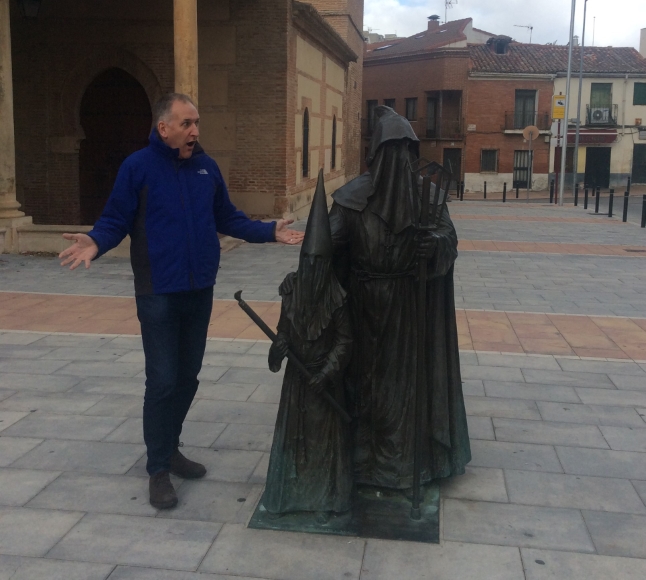
Finally we stopped in Guadalajara for lunch, and for this surprise. Of course, no-one expected this....
That's the end - so why not go back to the Match Reports Index and read some more reports?
You may also like....
Game 1 Umayyad Arab vs Armenian
Game 2 Umayyad Arab vs Delhi Sultanate
Game 3 Umayyad Arab vs Alexander The Great
Game 4 Umayyad Arab vs Maurikian Byzantine
Game 5 Umayyad Arab vs Medieval Polish
The Castles! Driving to Madrid
View My Stats for My Match Reports Pages


